Time in Asakusa
| Travel Reports by Chashitsu | view profile of Chashitsu |
| previous post |
| next post |
| Note: The opinions and views expressed in this user report are those of the individual author and do not necessarily reflect the opinions and views of japan-guide.com. |
April 27, 2016 - Time in Asakusa
Having never hitherto stayed in Tokyo, I decided to include it my itinerary, mainly as a transport hub for journeying north and managed to find a small Japanese inn, Sadachiyo in the old part of Tokyo - Asakusa. Asakusa is a couple of subway stops from Tokyofs Ueno station and close to the popular Senso-ji temple. It is an area of old streets near the Sumida river and convenient for access to some of the gardens in northern Tokyo. I arrived in Tokyo from Okayama in the early afternoon and went straight to Senso-ji temple, the oldest shrine in Tokyo. The approach through the Nakamise shopping street lined with shops selling souvenirs, religious paraphernalia and the inevitable food stalls leads to the impressive two storey main gate ? the thunder gate with itfs giant lanterns leading on to the main hall and five storey pagoda. The latter of more recent post war reconstruction. Despite the busy nature of this temple it has a rather lovely stream garden and wisteria. I later ventured to Ueno park, one of the largest in Tokyo, to make a trial run for the early morning trip the following day up north. Apart from a few structures and the peony garden I was rather disappointed.
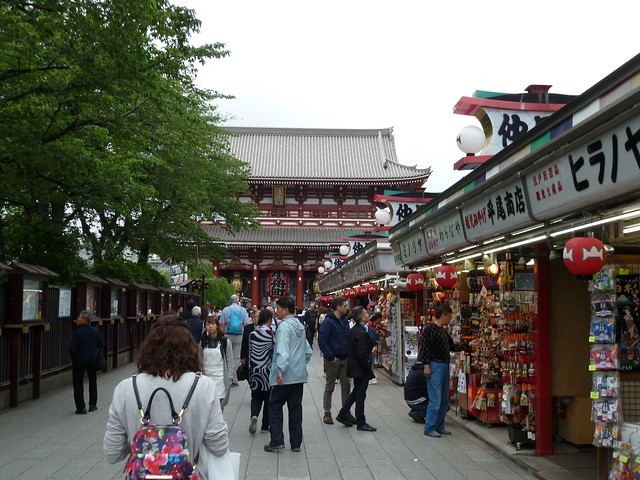
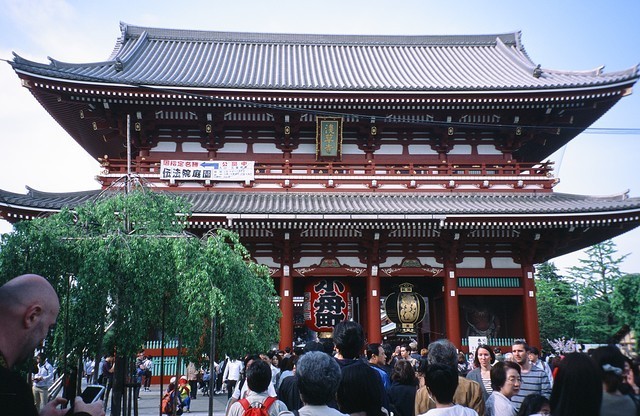
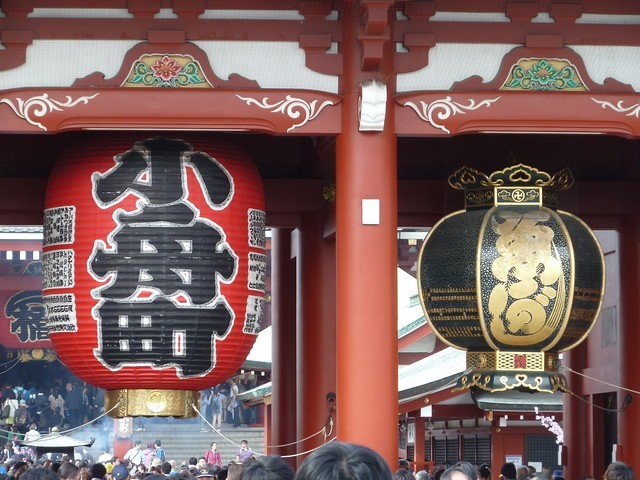
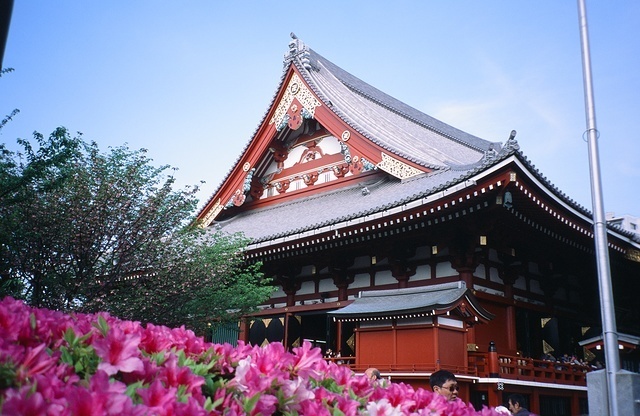
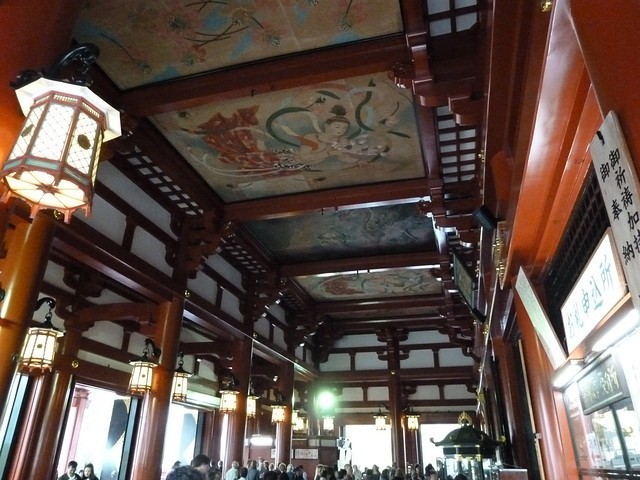
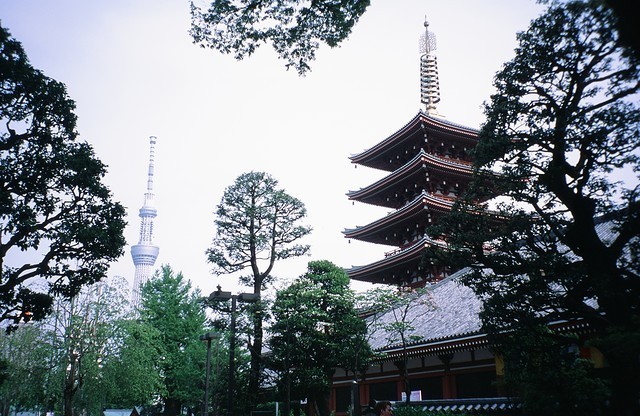
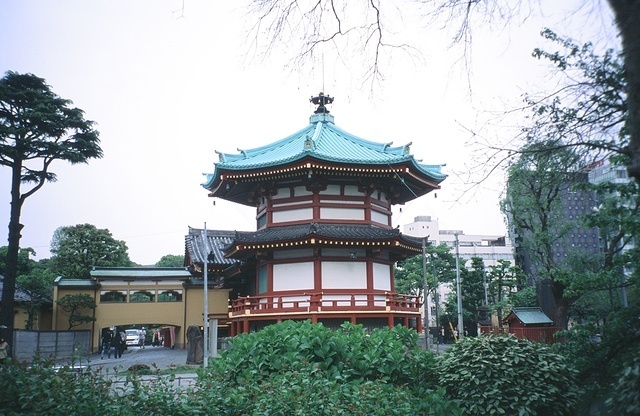

I had reserved a day for exploring the gardens of Rikugi-en, the Koishikawa gardens and the azalea festival at Nezu shrine and took the Yamanote gsubwayh to Komagome and was surprised to find my bus pass handy again. Rikugi-en garden is an Edo period daimyofs stroll garden circumnavigating a lake with two large islands. Itfs name taken from the six principles of waka poetry and boasts 88 spots of poetic association and includes an island with 35m hill and several tea houses. Although the cherry trees were in leaf, there was plenty of colour from the azaleas and a full calendar of flowering shrubs and trees in a garden well known for itfs autumn colour.
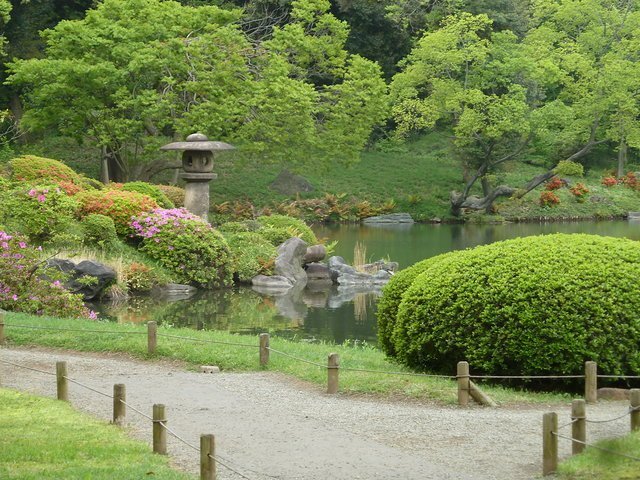
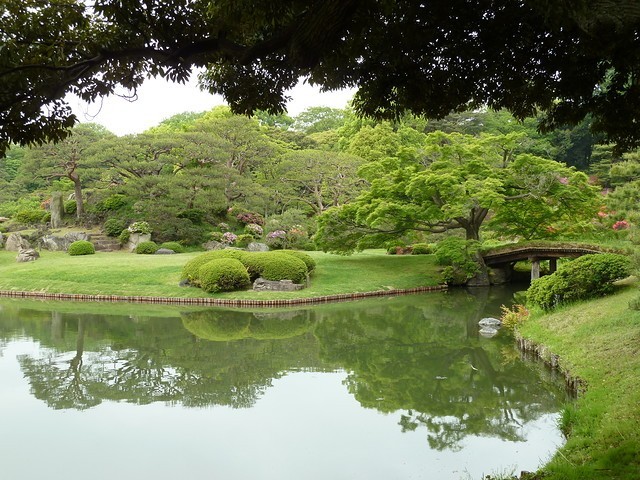
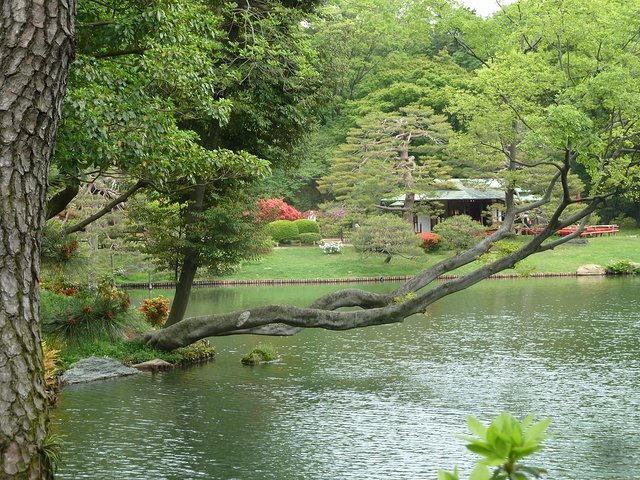

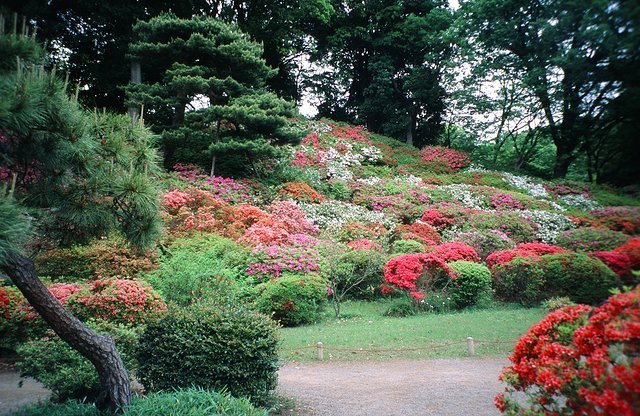
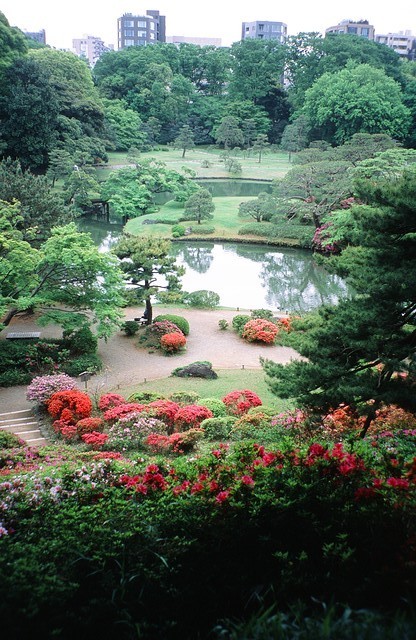
A couple of stations on the Namboku subway took me to Koraku-en station for the nearby Koishikawa Koraku-en garden, which is just behind the Tokyo Dome. The garden was originally built by the founder of the Mito branch of the Tokugawa clan in 1629 and later completed by his successor Mitsukumi. It is a stroll garden with lake, hills and an island in the paradise style with a distinct Chinese character including a gfull moonh bridge and an unusual arched wooden bridge. The garden consists of three lakes/ponds, a couple of streams, plum grove, iris beds and a paddy field where the local school children grow rice.
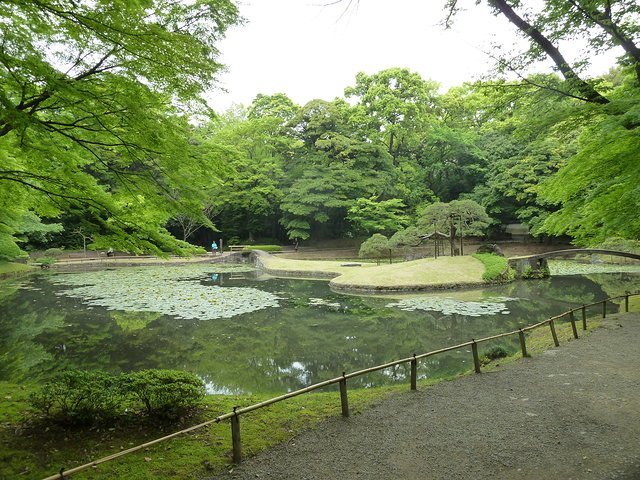
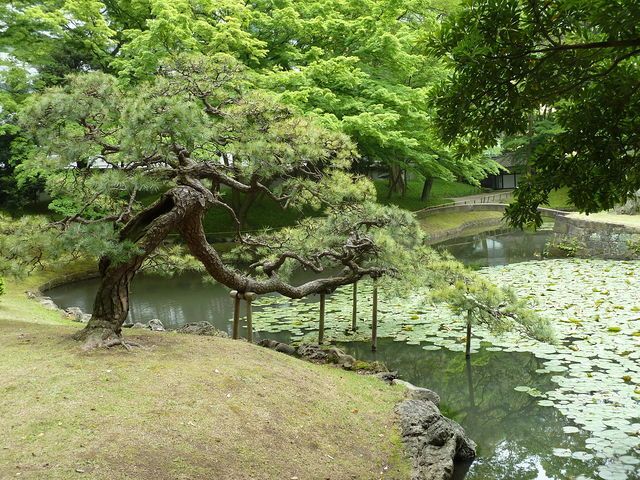
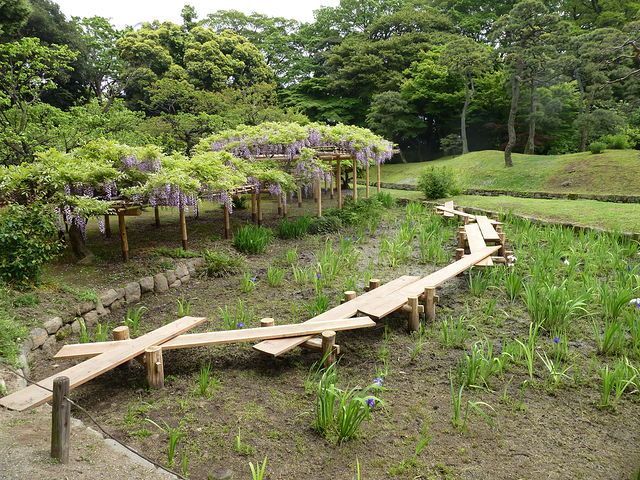
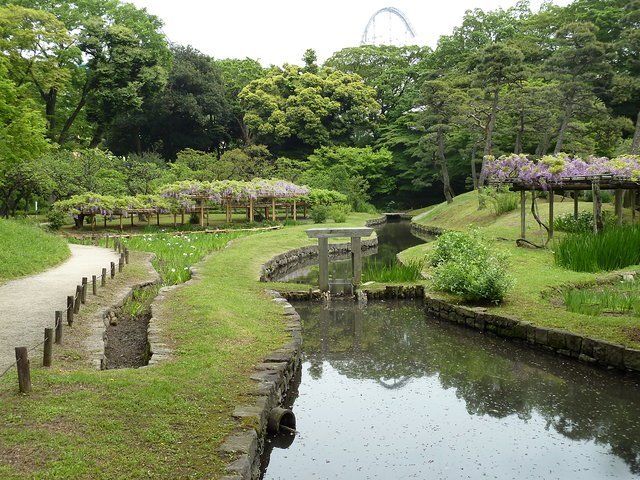
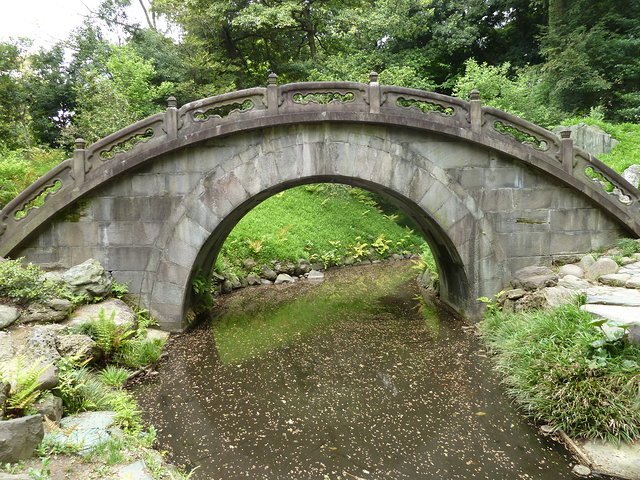
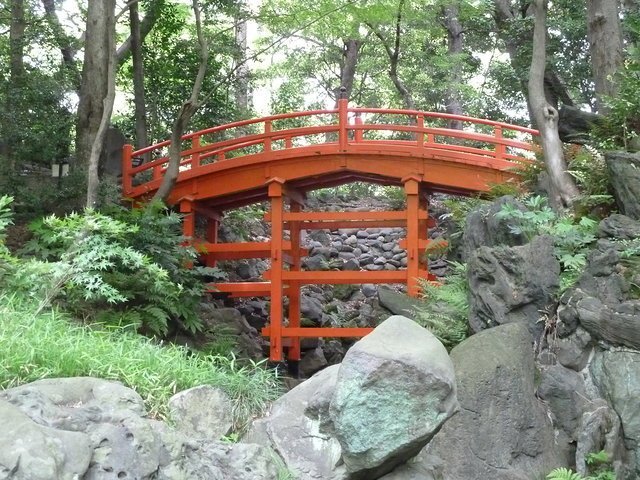
When walking back to the subway I noticed a sign to Kyu Furukawa garden and decided to explore. This is a Taisho period garden with an unusual combination of Japanese stroll garden and a Western rose garden in front of a Victorian style house of sandstone blocks with slate roof, now an art museum. The house and Western garden was designed by Josiah Condor and the Japanese garden by Ogawa Jihei. The rose garden is terraced and the beds lined with clipped box with an azalea garden on the lower terrace. The Japanese style garden is based on a shinji-ike shaped pond with islands fed by a 10m waterfall. Shinji-ike ponds are quite common and refer to the shape of the cursive script for the word mind or heart. The garden includes a plum grove and a wide variety of flowering shrubs and trees throughout the year. Another garden where the bus pass worked itfs magic.
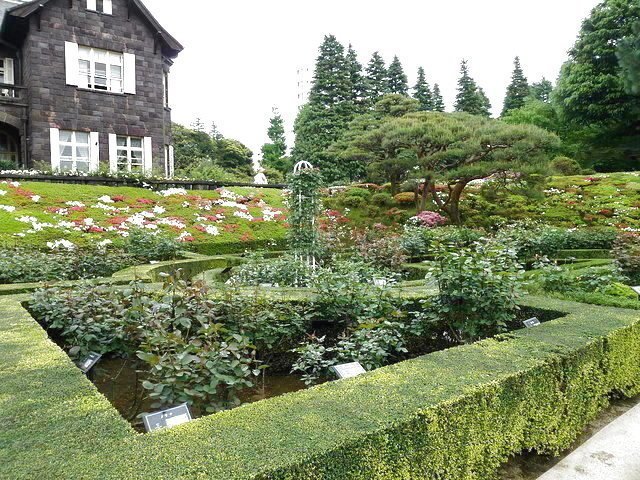
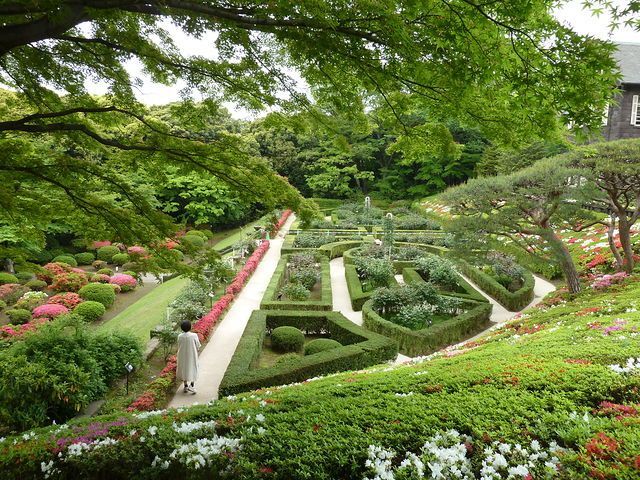
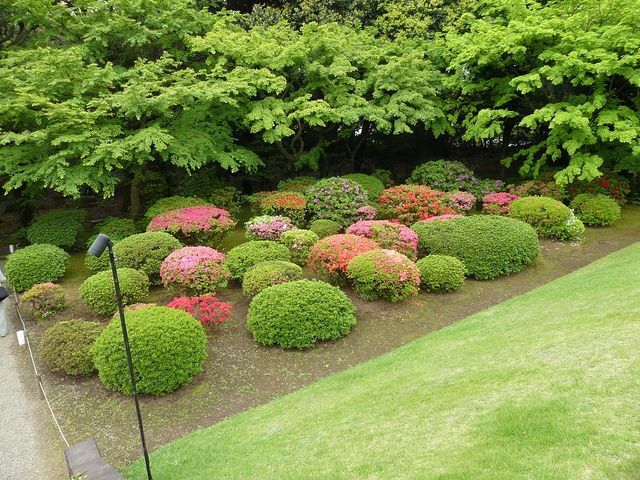
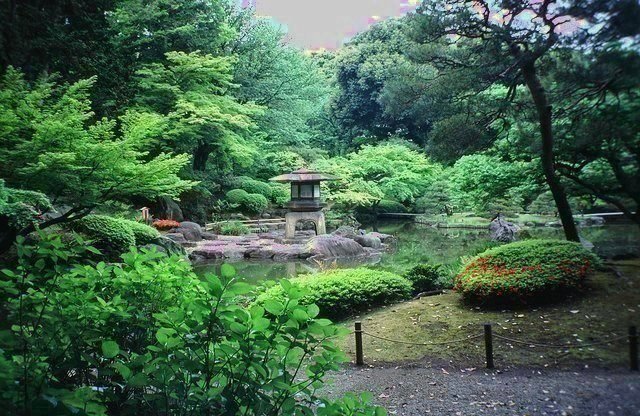
A short subway journey took me to the Koishikawa Botanical garden of Tokyo University. This is an extensive arboretum with a landscape garden in front of another western style house. The garden includes many cultivars of azaleas, camellias, cherries, wisterias, maples and plums covering 16 hectares, originally laid out in Edo times. Like a number of Japanese arboretums this represents typical temperate broad leaved forest of the region.
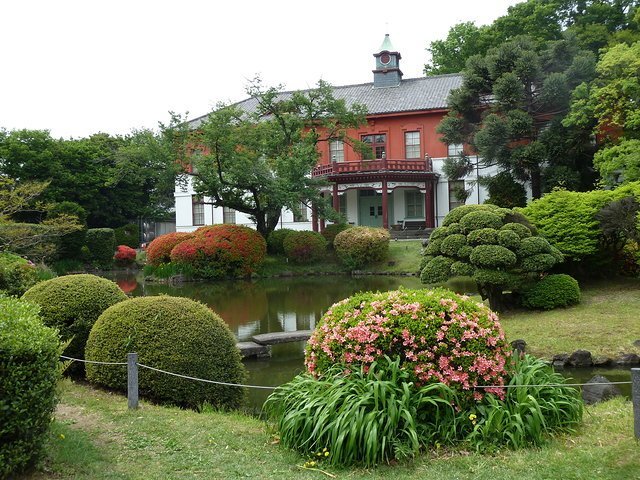
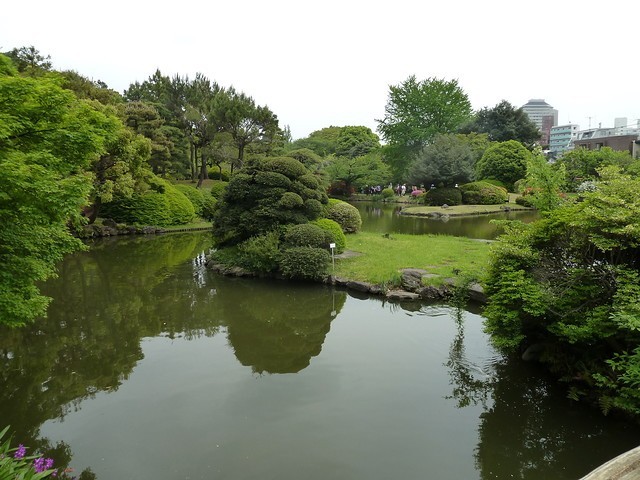

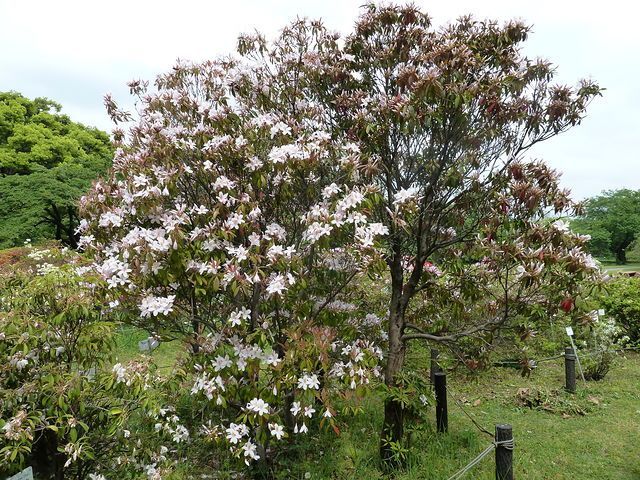
Retracing my steps to the subway and walking in the opposite direction I discovered, with some difficulty the Nezu shrine, which has an azalea festival for much of April. The shrine has a large bank (about hectare) covered in azaleas of many hues. The shrine has splendid Zuishimon and Karamon gates with the main building in Momoyama style with vivid carvings. It is a busy venue during the azalea festival. I wandered back via the subway and on foot to enjoy a coffee overlooking the Sumida river in Asakusa.
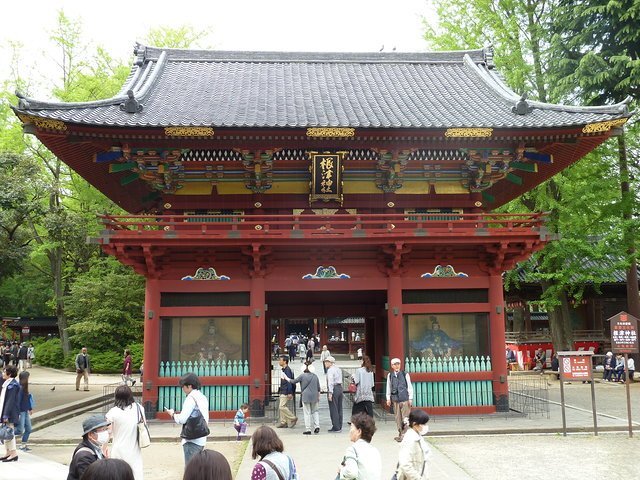

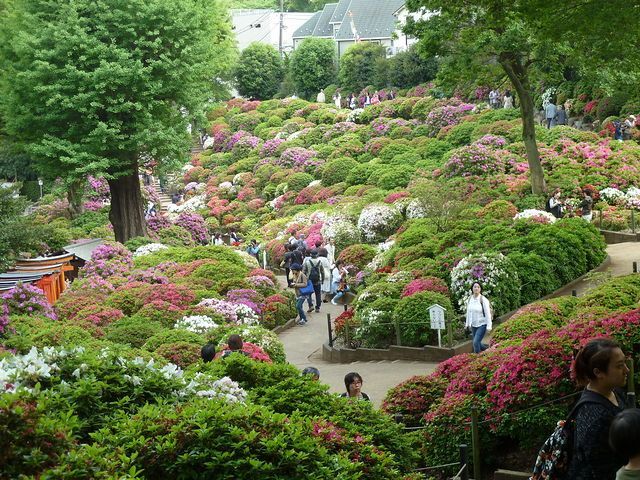
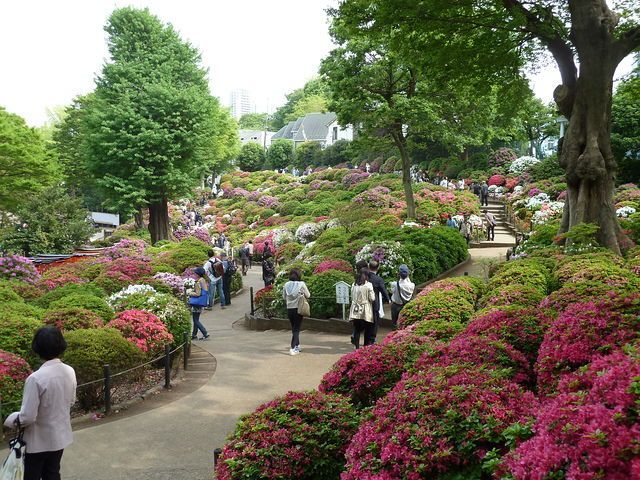
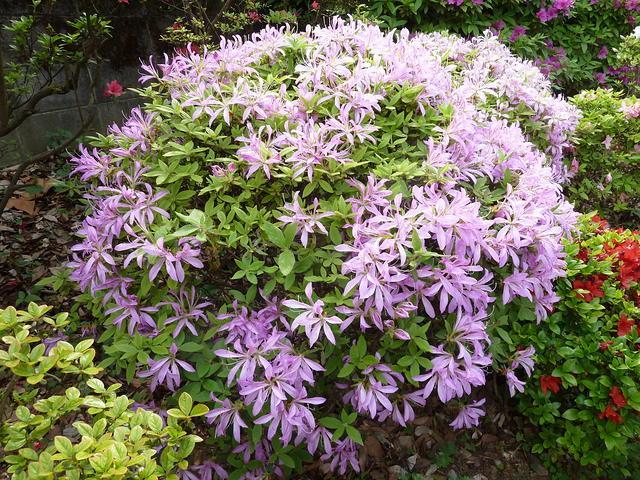
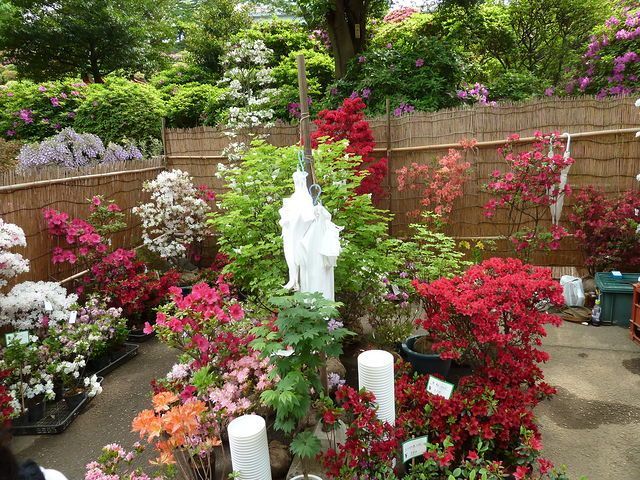
| previous post |
| next post |
|
List of Posts:
2017/07/25 - Japan's tectonic landscape reflected in the gardens 2017/07/15 - Flora of Japan 2016/04/27 - Time in Asakusa 2016/04/25 - Kakunodate 2016/04/23 - A Thousand Cranes 2016/04/22 - Castle in the Clouds 2016/04/21 - The beauty of Koraku-en 2016/04/20 - Far from the Madding Kyoto Crowds - Part 1 2016/04/20 - Far from the Madding Kyoto Crowds - Part 2 2016/04/18 - A Day in the Mountains 2016/04/17 - Delights of Hikone 2016/04/16 - Nara Revisited 2015/01/03 - Kamakura temples and gardens 2015/01/01 - Takayama Temple Trail 2014/12/29 - Kurama - Kibune hiking trail 2014/11/10 - A visit to Himeji 2014/11/05 - Shigemori Mirei - The Rebel in the Garden 2014/11/04 - Arashiyama and nearby sights 2014/11/03 - The less visited sites of Nara 2014/11/03 - The gems of Matsue 2014/10/31 - Agon-shu Monastery 2014/10/30 - In the footsteps of the Shogun 2014/10/30 - Tale of the Genji |
